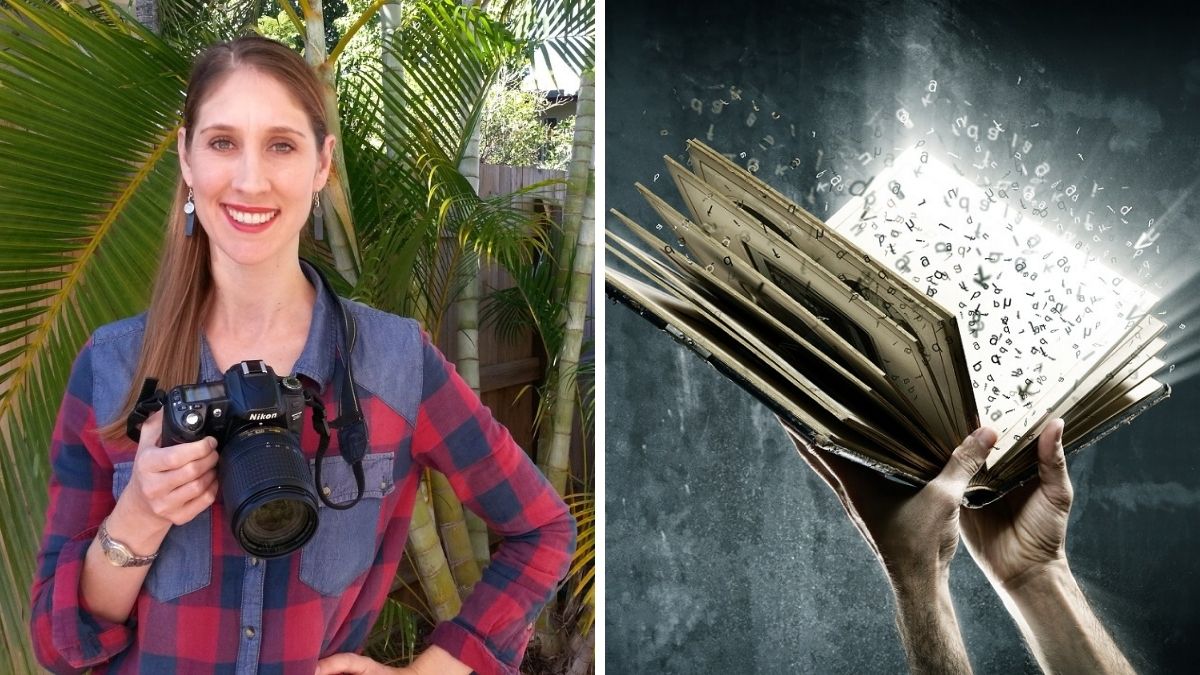
7 amazing secrets to writing book titles (PLUS catchy titles examples)
What are the first words your reader sees when they pick up your book?
The cover titles.
These headlines are short but powerful.
They entice and intrigue your reader to turn the page.
I have written thousands of headlines as a daily print newspaper print editor.
I know what sings and what falls flat.
Want to write no-stress, catchy headlines for an autobiography cover and chapters?
Keep reading for my favourite tips and tricks.
How to write a book title basics
A book cover includes: a lead headline (title), secondary headline (subhead) and often a book description (label).
The lead headline is one or a few words in large font to command attention.
The smaller second headline is longer and gives the lead context.
The third, if needed, describes the book: an autobiography, a memoir, a biography, a novel etc.
Inside, chapters take a title or number or both.
I like to include a chapter headline to engage the reader to keep going.
Related article –How to create a memorable autobiography cover
7 secret weapons
The following is not a definitive guide on how to write a book title but headline writing strategies I use the most.
These are my most favourite tactics.
Use them to write attention-grabbing cover and chapter titles or even start a story intro.
1. Play it straight
The play-it-straight title or headline is your ultimate fall back.
You are not trying to be tricky or fancy.
Simply tell the story in a few words accurately.
Aim to include a noun (name) and a verb (action word).
For example My Twenty-five Years in Provence by Peter Mayle and Child of the Holocaust by Jack Kuper.
2. Rhyme time
Some people can do this exceptionally well.
It helps to have a name to start with and work up.
I like to put these names or words into a rhyme search engine like Rhymes.net.
It comes up with many rhyming words of various syllables.
This is definitely a headline trick you can have fun with!
A rhyme title example is Not Quite Not White by Sharmila Sen.
3. Play on words
This is my No. 1 strategy on how to write a book title.
Most cover and chapter titles can be jazzed up with a play on words.
Usually I look to play with a headline verb.
Often you can re-angle a saying to link to the person and story.
A great example is musician Jimmy Barnes’s award-winning memoir Working Class Boy.
This title is a play on the name of his song Working Class Man.
Use the library or internet to find puns and sayings to play with.
Lately I’ve been using this online cliche list.
Related article –Book review: Working Class Boy by Cold Chisel’s Jimmy Barnes
4. Use a name
Names are an obvious choice for a life-story cover.
It is amazing how simple and effective this can be.
Often it is a no-brainer for a cover title.
A great example is Johnathan Thurston: The Autobiography.
Names personalise a story from the outset and are extremely relatable.
Related article – Book review: Johnathan Thurston – The Autobiography, with James Phelps
5. Ask a question
Asking a question in a headline or title sparks instant reader interaction.
It demands participation.
Hopefully positive participation!
But beware questions can backfire.
This will happen if a question can be easily answered or dismissed by your reader.
Use sparingly for maximum power.
A good question example is biography Do Oysters Get Bored? by Rozanna Lilley.
6. Quotes
Enormously effective but again, best in moderation.
Amazing for emotive and powerful stories.
Why re-invent the wheel: you already have your headline in your story.
The trick is to uncover it!
Make the quote the first headline.
It can be explained further with the second headline.
Quote example When We Were Very Rich by Isabel Donnollan.
Related article – Case study: Surprise find inspires biography of a late mother
7. Intrigue
This can be created by using a combination of the above techniques.
Use one word or many.
Can be helpful to make reference to a book or chapter’s theme.
An example is Tara Westover’s memoir Educated.
Also Trouserless Under the News Desk by Mike Higgins.
Related article –Book review: Educated by historian Tara Westover
Related article – Case study: New memoir by Channel 7 news anchor and blood cancer survivor Mike Higgins
Final say on how to write a book title
There are many creative tactics for how to write a book title or super chapter title.
Next time you are scratching for a headline try: telling the story, using rhymes, playing with words, use a name, a question, a quote or create intrigue.
I’ve just finalised the cover of my grandmother’s autobiography.
Stay tuned for which headline strategies we used.
Happy writing!
Free gift!
The first step to write a life-story book doesn’t have to be daunting. Watch my FREE video training to quickly sketch out a chapter mud map and get writing! Sign up here or use the form below.
Your say
What are some of your favourite book titles or headlines? Or what ‘how to write a book title’ tactic are you going to try? I’d love to hear from you! Drop me an email or leave a reply in the comments section at the end of this article.
Get in touch
Got a question or idea for an article? You can let me know here!
Don’t miss an article
Sign up here to get instant notifications when new material is published.
This article first appeared on the website Forever Young Autobiographies.com.

